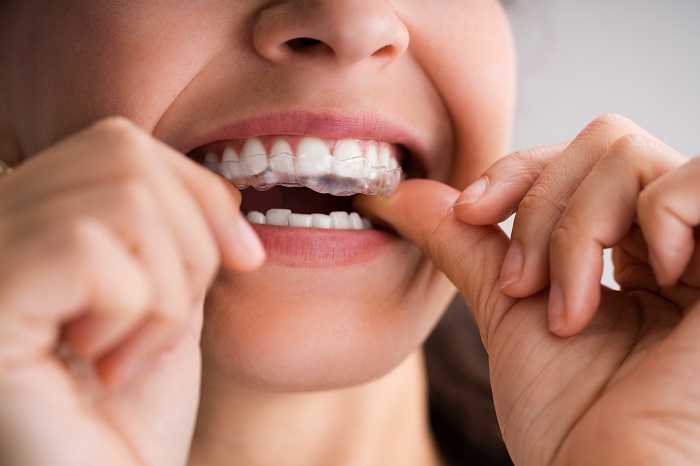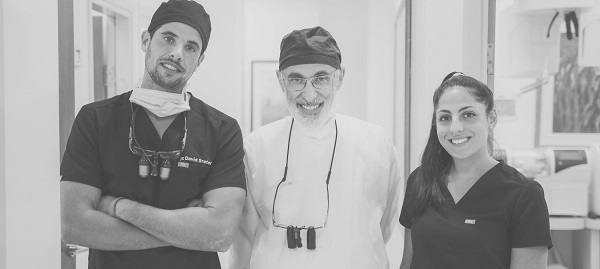
Caring for Your Teeth
- A look at toothbrushes
- Dietary Guidelines for Americans and MyPyramid
- Eating Habits for a Healthy Smile and Body
- Grinding - What does it Mean?
- Protecting Teeth with Mouthguards
- Tooth Whitening
- Fluoride - Nature's cavity fighter
Share This Page
1772 JADA, Vol. 137 http://jada.ada.org December 2006
FOR THE DENTAL PAT I E N T . . .
Knowing how to prevent injuries is important if you participate in organized sports or other recreational activities.
When it comes to protecting your mouth, a mouthguard is an essential piece of athletic gear that should be part of an athlete’s standard equipment from an early age. In fact, an athlete is 60 times more likely to suffer harm to the teeth when not wearing a mouthguard. Mouthguards help buffer an impact or blow that otherwise could cause broken teeth, jaw injuries or cuts to the lip, tongue or face. Mouthguards also may reduce the rate and severity of concussions.
Mouthguards are used most commonly in contact sports, such as boxing, football, hockey and lacrosse, but findings show that even in noncontact sports like basketball, gymnastics or skateboarding, mouthguards help prevent mouth and jaw injuries.
There are three types of mouthguards: the readymade, or stock, mouthguard; the mouth-formed “boil-and-bite” mouthguard; and the custom mouthguard made by a dentist.
Choose a mouthguard that
TAKE CARE OF THE MOUTHGUARD
Patients need to take care of their mouthguards by doing the following:
To get the best service from a mouthguard, you should
Prepared by the ADA Division of Communications, in cooperation with The Journal of the American Dental Association and the ADA Council on Scientific Affairs. Unlike other portions of JADA, this page may be clipped and copied as a handout for patients, without first obtaining reprint permission from the ADA Publishing Division. Any other use, copying or distribution, whether in printed or electronic form, is strictly prohibited without prior written consent of the ADA Publishing Division.
“For the Dental Patient” provides general information on dental treatments to dental patients. It is designed to prompt discussion between dentist and patient about treatment options and does not substitute for the dentist’s professional assessment based on the individual patient’s needs and desires.
Copyright ©2006 American Dental Association. All rights reserved.
FOR THE DENTAL PAT I E N T . . .
Knowing how to prevent injuries is important if you participate in organized sports or other recreational activities.
When it comes to protecting your mouth, a mouthguard is an essential piece of athletic gear that should be part of an athlete’s standard equipment from an early age. In fact, an athlete is 60 times more likely to suffer harm to the teeth when not wearing a mouthguard. Mouthguards help buffer an impact or blow that otherwise could cause broken teeth, jaw injuries or cuts to the lip, tongue or face. Mouthguards also may reduce the rate and severity of concussions.
Mouthguards are used most commonly in contact sports, such as boxing, football, hockey and lacrosse, but findings show that even in noncontact sports like basketball, gymnastics or skateboarding, mouthguards help prevent mouth and jaw injuries.
There are three types of mouthguards: the readymade, or stock, mouthguard; the mouth-formed “boil-and-bite” mouthguard; and the custom mouthguard made by a dentist.
Choose a mouthguard that
- is resilient and tear-resistant;
- fits properly and is comfortable;
- is easy to clean;
- does not restrict speech or breathing.
TAKE CARE OF THE MOUTHGUARD
Patients need to take care of their mouthguards by doing the following:
- rinse before and after each use or brush with a toothbrush and toothpaste;
- occasionally clean the mouthguard in cool, soapy water and rinse thoroughly;
- transport the mouthguard in a sturdy container that has vents;
- make sure not to leave the mouthguard in the sun or in hot water;
- check for wear and replace the mouthguard when necessary.
To get the best service from a mouthguard, you should
- not wear removable appliances, such as retainers, with a mouthguard;
- wear a custom-fitted mouthguard if you wear braces or have a protruding jaw, receding chin or cleft palate;
- not chew on or cut pieces off your mouthguard;
- wear the mouthguard during practice sessions as well as during games;
- schedule regular dental checkups and visit your dentist before each playing season;
- bring your mouthguard to each dental visit.
Prepared by the ADA Division of Communications, in cooperation with The Journal of the American Dental Association and the ADA Council on Scientific Affairs. Unlike other portions of JADA, this page may be clipped and copied as a handout for patients, without first obtaining reprint permission from the ADA Publishing Division. Any other use, copying or distribution, whether in printed or electronic form, is strictly prohibited without prior written consent of the ADA Publishing Division.
“For the Dental Patient” provides general information on dental treatments to dental patients. It is designed to prompt discussion between dentist and patient about treatment options and does not substitute for the dentist’s professional assessment based on the individual patient’s needs and desires.
Copyright ©2006 American Dental Association. All rights reserved.


